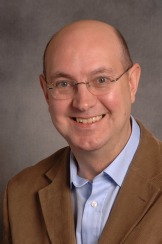报告题目:A New Design Tool for Feature Extraction in Noisy Images based on grayscale Hit-or-Miss Transforms
报告人:Stephen. Marshall--University of Strathclyde, Glasgow, UK
日 期:2012.10.29 (周一上午) 9:30
地 点:四楼报告厅
The Hit-or-Miss transform (HMT) is a well known morphological transform capable of identifying features in digital images. When image features contain noise, texture or some other distortion, the HMT may fail. Various researchers have extended the HMT in different ways to make it more robust to noise. The most successful, and most recent extensions of the HMT for noise robustness, use rank order operators in place of standard morphological erosions and dilations. A major issue with the proposed methods is that no technique is provided for calculating the parameters that are introduced to generalize the HMT, and, in most cases, these parameters are determined empirically. We present here, a new conceptual interpretation of the HMT which uses a percentage occupancy (PO) function to implement the erosion and dilation operators in a single pass of the image. Further, we present a novel design tool, derived from this PO function that can be used to determine the only parameter for our routine and for other generalizations of the HMT proposed in the literature. We demonstrate the power of our technique using a set of very noisy images and draw a comparison between our method and the most recent extensions of the HMT.
Biography:
Prof Stephen Marshall has carried out research into image processing for 20 years. He has managed several UK and European Union research projects and also acted as a reviewer. His particular speciality is non linear image processing. He now runs a research group of 6 postgraduate and post doctoral staff, with funding from UK, EU and International sources including government and private industry. He has published over 100 conference and journal papers and graduated several research staff with PhD and masters qualifications.
He is a member of a number of national and international professional bodies and in July 2000 was admitted Fellow of the Institution of Electrical Engineers now the IET.
In recent years Prof Marshall has applied his techniques in the area of genomic signal processing. In particular he has developed techniques for deriving the parameters of Probabilistic Boolean Networks (PBNs) from a temporal gene expression data sequence.